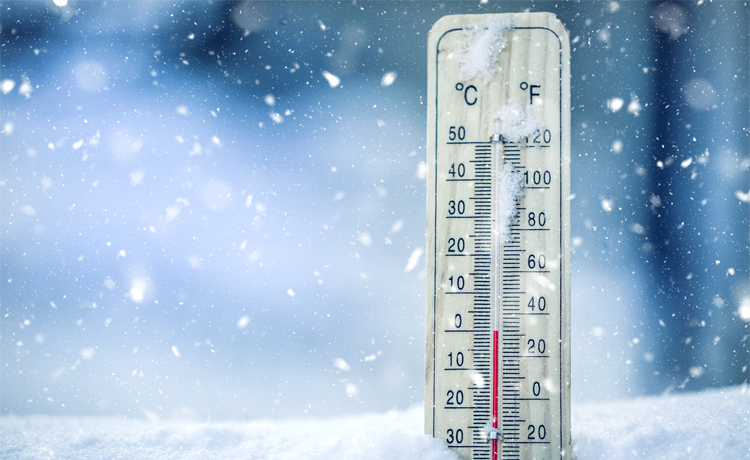Cold Weather: Time to Prepare Your Workforce

While the 70 degree temperatures to start November in Connecticut were a nice surprise, the cold days are coming and now is the time to prepare.
Planning ahead and educating employees now can prevent serious illness and injury during the year’s coldest months.
OSHA does not have a specific standard that covers working in cold environments, but the Occupational Safety and Health Act does outline employers’ overall duty to protect workers.
“It is crucial that employers educate individuals about the symptoms of health issues caused by the cold.”
CBIA’s Phillip Montgomery
Cold environments can present hazards that cause death or serious physical harm in the workplace.
“Frequently, employers will not inform employees ahead of time as to the steps they need to take when working in the cold,” CBIA’s compensation services and safety director Phillip Montgomery said.
“It is crucial that employers educate individuals about the symptoms of health issues caused by the cold before this dangerous condition arises.”
Cold Stress
OSHA experts say cold stress occurs by driving down skin temperature, and eventually the body’s internal temperature.
When the body is unable to warm itself, serious cold-related illnesses and injuries can occur.
Any person who works in a cold environment is at risk of cold stress.
Risk factors include wetness or dampness, dressing improperly, and exhaustion, predisposed health conditions, and poor physical conditioning.
People who have hypertension, hypothyroidism, and diabetes are at elevated risk.
Types
There are a number of different types of cold stress. Frostbite, hypothermia, and trench foot are the most common for workers in the colder months.
The freezing of the skin and underlying tissue causes frostbite. It can lead to permanent damage. In the most extreme cases it can lead to amputation.
If someone is not dressed properly for cold temperatures, they may start to develop reddened skin and white patches in their fingers, toes, or ear lobes.
When the body drops below 95 degrees fahrenheit, hypothermia will occur.
Uncontrollable shivering is often a mild symptom of hypothermia.
When the body is exposed to cold temperatures for long periods of time, the body uses up energy. Eventually with hypothermia, the body will lose heat faster than it can be produced.
Uncontrollable shivering is often a mild symptom of hypothermia. More severe symptoms are slurred speech, loss of coordination, and confusion.
Trench foot can also impact a person who is exposed to cold and wet conditions for a long period of time.
People have had trench foot in as high as 60-degree temperatures. Like frostbite, reddened skin and tingling feelings are symptoms. People have also reported swelling, leg cramps and numbness.
Prevention
Training employees about the different types of cold stress and the symptoms can prevent injury.
OSHA recommends employers also train employees about how to recognize environmental and workplace conditions that can lead to cold stress, and teach them about wearing proper clothing to protect themselves.
Leaders in the workplace should encourage employees to monitor their physical conditions.
Leaders in the workplace should encourage employees to monitor their physical conditions.
They should also schedule frequent breaks during the day where employers can find a warm place to “defrost.”
OSHA also recommends people work with partners during the cold weather months so there is someone to check in.
For more information, contact CBIA’s Phillip Montgomery (860.244.1982).
1 thought on “Cold Weather: Time to Prepare Your Workforce”
Leave a Reply
RELATED
EXPLORE BY CATEGORY
Stay Connected with CBIA News Digests
The latest news and information delivered directly to your inbox.



33 years working on high-rise construction and restoration and now I read about the safety? Thank God I started in New York before finishing up in my hometown of Atlanta. Yes, cold is cold no matter where you are. Icebergs in the East River, not happening in Atlanta, but few buildings close enough to block the wind off. Believe me it ain’t the temperature it’s the wind chill that you better be prepared for. If you don’t have it with you when you need it, then you’re SOL, take extra clothes in your car or bag. One more sweatshirt or old sweater can make a huge difference.